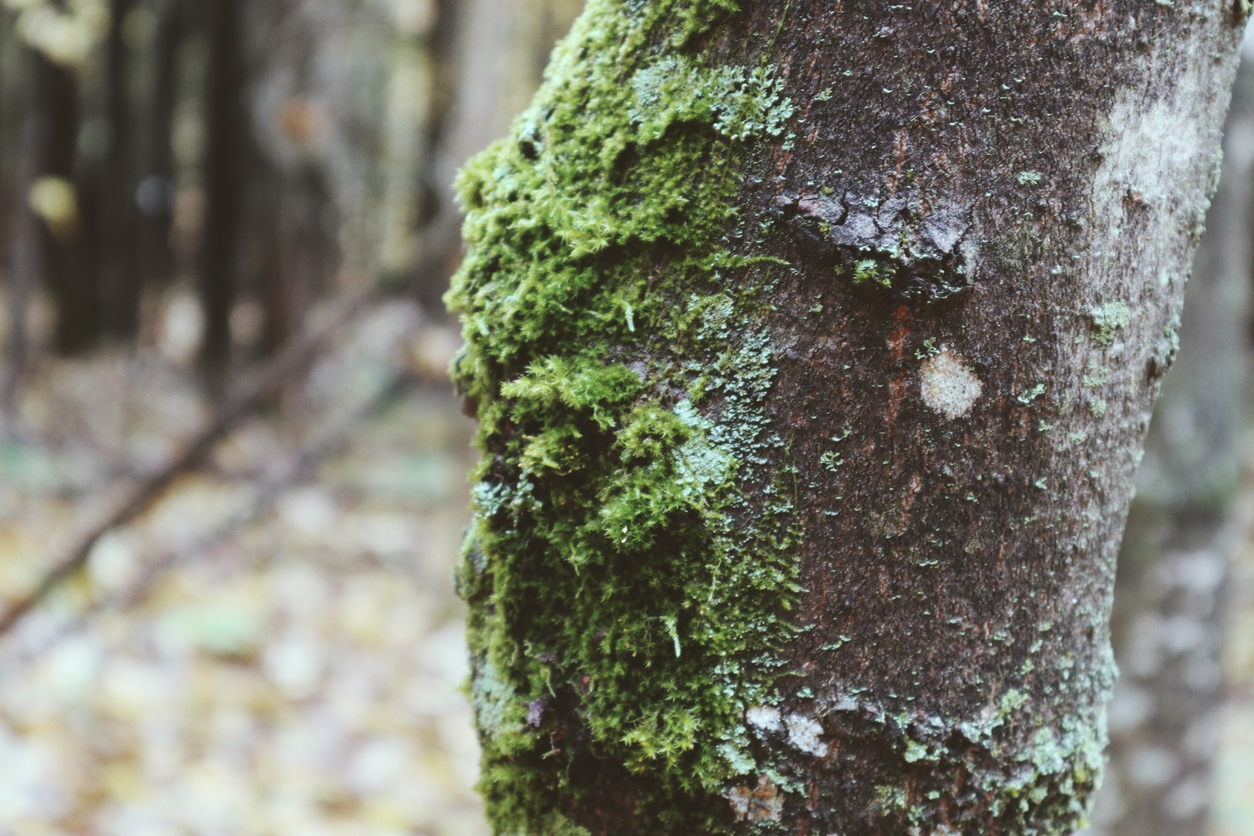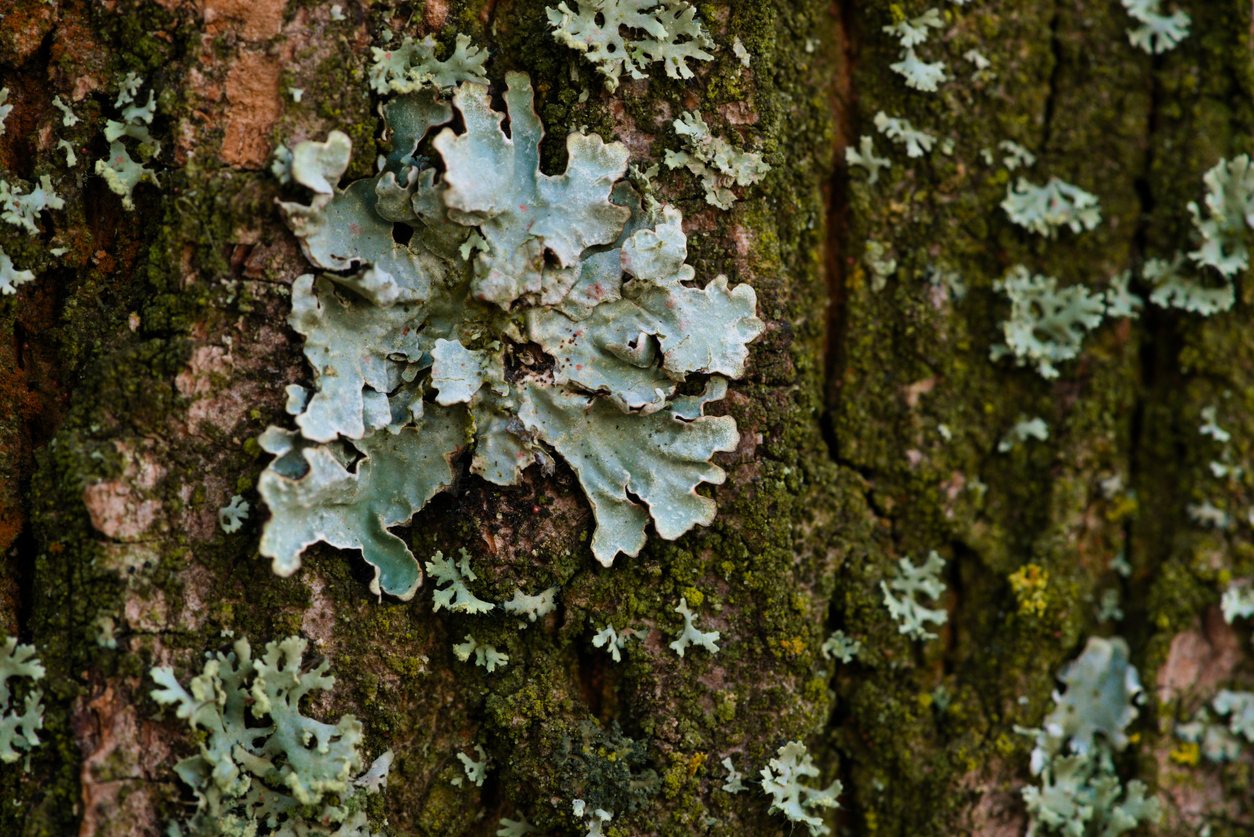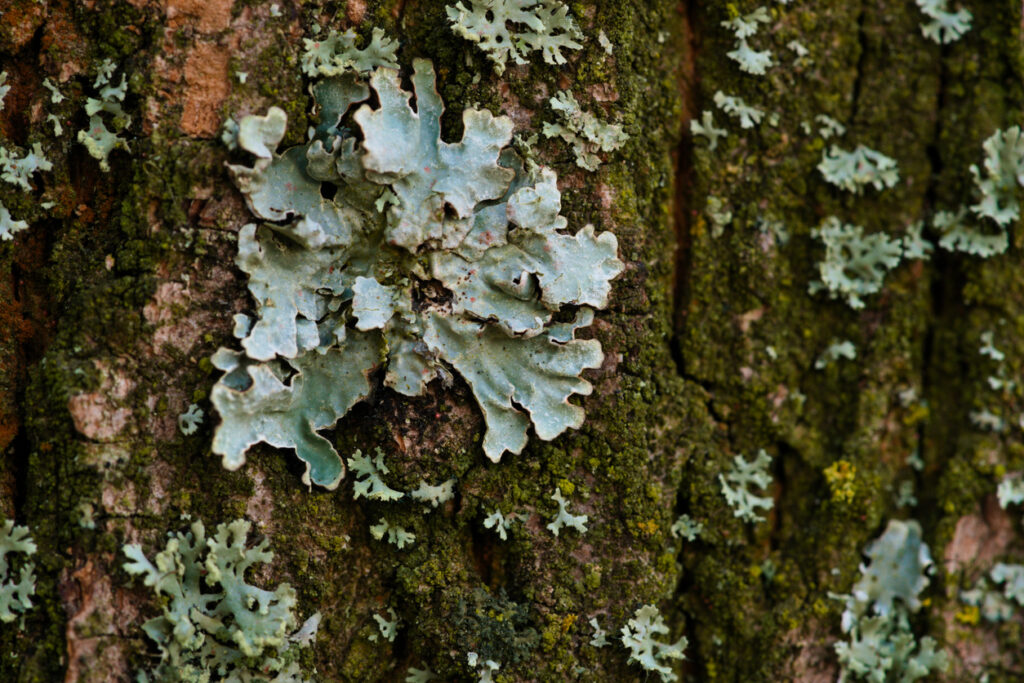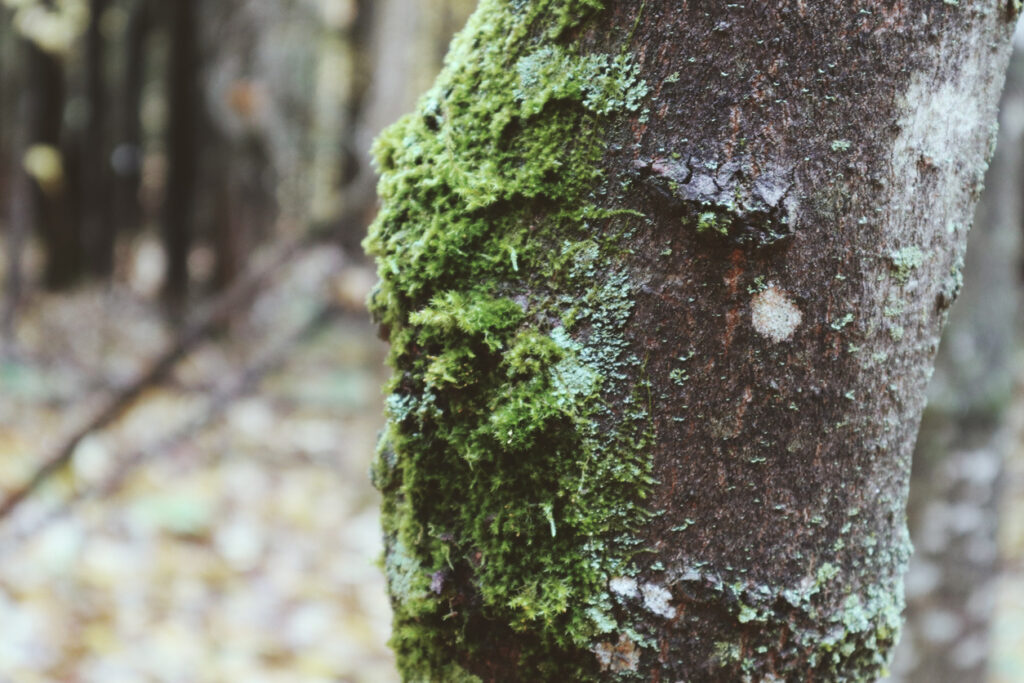Lichens On Trees – Causes And Treatment
The world of lichens is as complex as it comes. With over 13,000 species in the wild, there’s little chance that many trees can escape it. This is especially true if you have to live in a temperate zone where adequate light and humidity levels are fertile grounds for these fascinating organisms. But even if the weather conditions are inhospitable, some lichens are so hardy they’d brave the frigid winds and dim light to grow and prosper.
But just because you have lichens on your trees doesn’t mean you have to go after them with everything you got? Or do you? These questions are meant to tease you into reading more to get the answers. Here we separate facts from fiction regarding lichens and explore the possibility that there might be benefits to having them growing all over the tree bark.
What are Lichens?
Despite their deceptive appearance, lichens are not one living organism but two. Both algae and fungi get together in a symbiotic relationship to create that intricate life form you see growing on your tree. That life form is often called a thallus. As for the fungus, it’s responsible for almost 80 percent of the body of the thallus.
Sometimes that relationship allows a third party into it. That’s usually a cyanobacterium from the Monera kingdom. But whether it’s a three-way or a monogamous relationship, most of the hard work falls on the shoulders of the fungus. It provides protection for the other party or parties, absorbs moisture from the air, and collects mineral particles from the environment.
The algae and cyanobacteria are responsible for providing food to the household. The green chlorophyll on their bodies photosynthesizes the sunlight and creates the necessary nutrients to nourish every member of the lichen collective.
That makes things like leaves, roots, and stems redundant. And that’s the main difference between lichens and plants. Lichens need moisture, dew, or rainfall to survive. During the hot summer months and dry spells, lichens go dormant and wait for the next rainfall.
At no time in their lives do lichens rely on trees for moisture or nourishment. In other words, lichens do not harm the tree bark they perch on one way or the other.
Common Lichen Types
We mentioned that there are thousands of species of lichens growing on the bark of trees in old forests, and the surface of ancient ruins. But it’s unlikely that you’ll have all these species in your garden. The most common lichen types you’ll see parking on the bark of your trees are the following.
- Physcia adscendens: The grayish branches of this variety are flat and have intricate designs. It thrives in nitrogen-rich environments and often attaches itself to the small branches and stalks of plants where the soil has high concentrations of nitrogen.
- Usnea subfloridana: A bushy lichen with long strands that look like a flowing beard. In some circles, it’s called the old man’s beard. It usually has a black base and yellowish-green or gray-green strands. Preferring acidic bar, this variety often grows on birch. It favors small branches over trunks.
- Xanthoria parietina: A showboat of a lichen, this variety has bright colors that make it easy to spot on any tree. It comes in many varieties including bright orange or yellow. But in the shade, it looks gray-green just like any other lichen. It grows on rocks, rooftops, and tree barks where the humidity is high and the sun is bright.
- Ramalina fastigiata: This lichen doesn’t have a beard. Instead, it grows branches that like strap. It thrives in sunny spots and targets young trees. This variety also prefers to grow on branches, not trunks. It has a gray-green shade that turns bright green when wet.
- Ramalina farinacea: A close relative of the previous species. Only it has thinner strap-like branches than its cousin and it can be either yellow-green or gray-green. It has a higher tolerance to shaded spots than many lichen species. The branches often grow to about 3 inches.
- Hypogymnia physodes: A lichen that grows on acidic bark, this variety has plump branches growing out of a brown-colored base. The branches are often jagged and gray-green in color. It is slick to the touch and has all the appearances of overgrown weeds.
Identifying Lichens
Some people confuse lichens for moss and vice versa. But while moss is an actual plant with dark green color and a coarse texture, lichens are a life form that combines two or three organisms together. Lichens come in different colors that vary between yellow-green, gray-green, yellow, and bright orange.
In general, lichens will fall under one of three categories. They can be crustose with the distinct appearance of a crust, foliose where the branches look like leaves, or they could be fruticose where they have tubes and strands.
Lichens produce chemicals that can be used to identify their species. Some lichens grow on rocks, others grow on humid surfaces while there are lichens that only grow on trees. To identify the lichen growing in your garden, you will most likely need a magnifying glass.
Lichens seem to reproduce and multiply in quite complex ways. Usually, the fungus part is the one that reproduces using sports. Both algae and cyanobacteria do not use sexual reproduction once they become part of the symbiotic relationship. Instead, they reproduce using vegetative means much like a starfish. So if you break a piece off the lichen that contains parts of fungi and algae, the new piece will develop into a new lichen
Lichens Causes
Whether they grow on a rusted pipe or on the bark of your tree, lichens thrive in wet conditions and sunny spots. In other words, lichens don’t have a favorite tree. Instead, they focus more on the bark they will attach themselves to. Since they don’t draw any nutrition from the tree, the type of the tree doesn’t play any role in the category of lichen you will get.
Smooth barks will often attract crustose lichens with their flaky bodies. The rough or veined bark of older trees is favored by foliose and fruticose species. Since wet conditions attract lichens of all types, you can limit their spread on the trunk and branches of the trees by improving air circulation in the garden and pruning dense branches regularly.
Because both algae and fungi occur naturally in the garden, there’s not much you can do to stop those two organisms from uniting to form a lichen. That said, the growth rate of lichens is actually very slow. They grow on average at a rate of 0.07 inches a year. So they will need many years to reach their full size of a few inches and multiply over the trunk and branches of the tree. This gives you ample time to remove them if you choose to.
Lichens and Trees
The only time that the type of the tree matters to lichens is when they choose the best location on the branches. Here, deciduous trees offer more space for lichens to grow since the inner branches get plenty of sunlight. This is especially true when the tree sheds its leaves and exposes more of its branches to the rain, wind, and sun.
Conifers on the other hand pose a challenge to the growth and very survival of lichens. The bark of conifers is often too acidic for the sensitive lichens to perch on. Moreover, the dense canopy and the presence of leaves all year round don’t allow much sunlight to make it to the inner branches. This leaves the lichens with no other option but to latch on the trunk and outer branches of the tree.
Sometimes liches will find refuge on the surface of dead branches. Since dead branches have less foliage and are not covered with thick resin and sap, they make a more suitable accommodation for lichens. This is why some people tend to mistakenly blame lichens for the dead branches.
Benefits of Lichens
As we have seen so far, lichens don’t pose any danger to the trees they live on. They tend to think of the tree as a place to live that offers them nothing more than shelter. And contrary to what some people might think, lichens have some benefits in nature.
For one thing, they’re a nutritious source of food for many wildlife including deer and mountain goats. Birds use fragments of lichens to build their nests. And in medicine, lichens are a good source of antibiotics.
Since lichens only grow in clean environments and have a low tolerance for pollutants, you can take their presence on your tree as a good indication of the air quality in your area. Moreover, since lichens absorb mineral particles in the air and convert carbon dioxide into oxygen, they contribute even in a small way to the purification of the air in your property.
Lichens Treatment
With all that in mind, some gardeners and homeowners can’t stand the sight of lichens on their trees. It doesn’t matter that the lichens don’t harm the trees, their very presence on the trunk diminishes the beauty of the landscape. If that’s the case then you can use any of the following treatments to remove them.
- Manual Removal: Use a ladder to reach the lichens and gently remove them. This method is best when the tree is dormant. That way you won’t damage any buds on the plant or tree. If the branch is dead, then you can cut it off during pruning.
- Chemical Removal: Mix six tablespoons of copper sulfate in a gallon of water and apply generously to the branches of the infected tree. This makes it easier to gather the lichens and dispose of them safely.
- Pruning: Since many lichen species prefer small branches to reside on over the tree trunk. You can get rid of lichens when you do your annual pruning.
- Prevention: As we mentioned, lichens prefer deciduous trees over conifers due to the dense foliage and lack of sunlight on the inner branches. So ensure your tree is growing healthily with a robust canopy to limit the chances of lichens making it their home.



